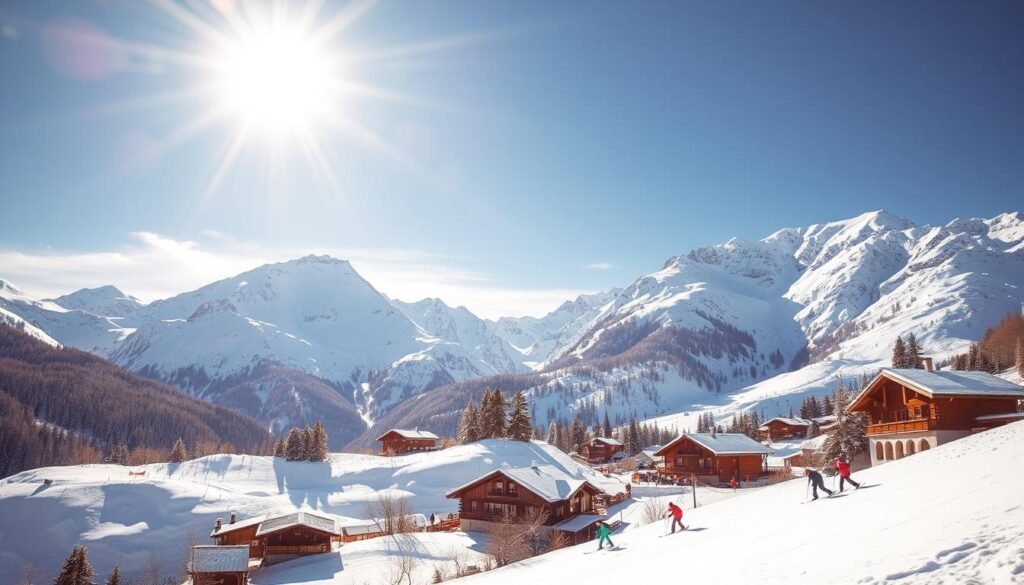One in three travelers I spoke with says they found major savings by booking right after the holidays. That makes this month a sweet spot for smart planning: prices dip, crowds thin, and you often get more choices than you expect.
I map options across the world so you can pick weather and activities that fit you. From snowbound slopes and northern lights to warm, dry beaches and clear-sky hiking, these destinations match many tastes and energy levels.
I also point out practical wins: easier flights, last-minute deals, and quicker access to top sights. Read on for tips about timing, transit, and how to score the most value this season.
Key Takeaways
- January often means lower prices and thinner crowds for savvy travelers.
- Weather varies widely—choose mountains or beaches based on your mood.
- Better flight availability and hotel deals can make planning simpler.
- Expect special seasonal events like northern lights and winter festivals.
- Flexibility with dates and airports boosts your chance for savings.
Why January is a brilliant time to travel: weather, crowds, and deals
When the new year begins, I often find that quieter streets and steady conditions create great openings for trips. The winter shoulder season means I see fewer lines at museums and easier restaurant reservations.
Aurora chases and ski peaks come alive across Nordic skies and slopes in the Alps, Canada, and the U.S. At the same time, Mediterranean cities like Prague, Vienna, and Budapest are perfect for snow-dusted strolls and shorter daylight city breaks.
Warm options also shine: the Caribbean and Central America tend toward dry spells, Patagonia offers prime hiking, and much of Southeast Asia sees clear skies.
| Region | Typical climate | Peak activity |
|---|---|---|
| Nordic & Arctic | Long nights, cold | Aurora hunting |
| Alps / Rockies | Cold, snowy | Skiing & snowboarding |
| Caribbean / Central America | Warm, dry | Beaches & snorkeling |
| Patagonia / SE Asia | Crisp hiking / clear skies | Trekking & sightseeing |
I recommend using flexible-date tools, fare alerts, and alternate airports to stack savings on flights. For balance, I pair short city stays with nearby nature day trips and book sooner for special tours that reopen after holidays.
Snowy escapes in the USA: Breckenridge, Big Sky, Alta & Snowbird, Heavenly
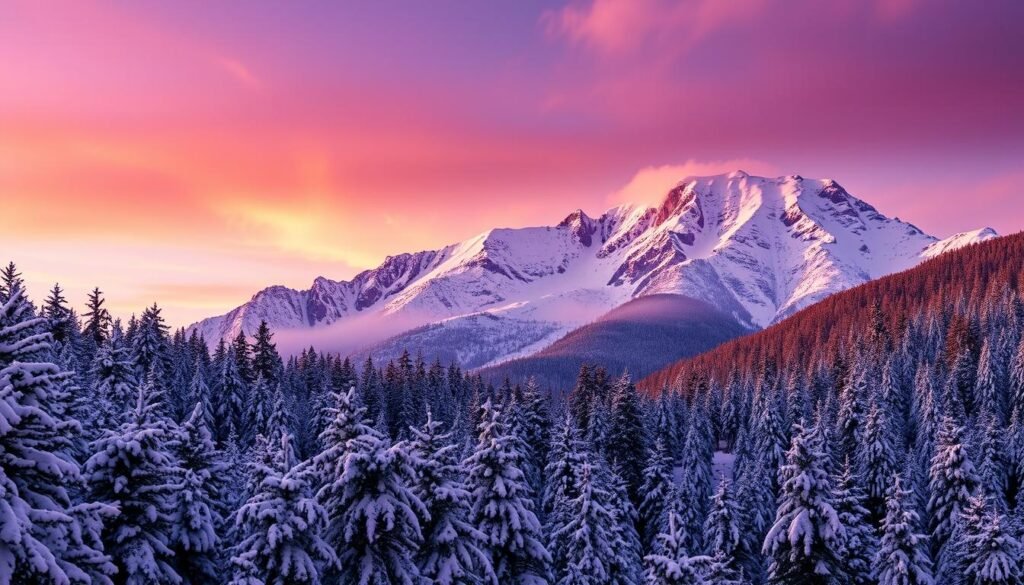
I pick four U.S. mountain towns where January means steady powder, lively villages, and easy gateway drives.You can learn more about best-places-to-visit-in-europe.
Breckenridge, Colorado
Peak ski season brings groomed runs and a cozy Main Street vibe. I love the International Snow Sculpture Championships for an afternoon stroll.
Fly into DEN, drive about 1h45, and expect day temps around −2°C to −1°C. For après, check Gold Pan Saloon or Clint’s Bakery.
Big Sky, Montana
Big Sky means wide mountain terrain and reliable powder. Nordic trails and Yellowstone wildlife tours make for varied activities.
Bozeman (BZN) is roughly an hour away and daytime highs sit near −4°C to −3°C. Everett’s 8800 is my go-to for low-key evenings.
Alta & Snowbird, Utah
Forty-five minutes from SLC, this duo offers deep, dry snow and the Aerial Tram to Hidden Peak. I still get chills watching the Torchlight Parade at night.
Temperatures range from −9°C to −1°C. If you love steep lines, this is the skiing stop I recommend.
Heavenly, Lake Tahoe
Reno is about an hour away for South Lake Tahoe access. Bluebird days, the gondola, and Ridge and Skyline trails deliver standout views.You can learn more about best-national-parks-to-visit-in-the-us
Expect −6°C to 0°C and lively village nights after tubing at Adventure Peak. I suggest booking ski-in/ski-out hotels and aiming for quieter post-holiday time.
Warm U.S. winter sun: Palm Desert, Miami, San Diego, Dry Tortugas
Sunny winter escapes give me a mix of culture, beach time, and easy outdoors. I pick spots where mild weather makes active days simple and flights stay straightforward.
Palm Desert, California
I time a trip with the Palm Springs International Film Festival or a Friday night VillageFest. Day temps sit around 15–22°C and the Bump and Grind Trail is a quick, scenic hike.
Hotel Paseo offers poolside downtime after festival screenings and desert walks.
Miami, Florida
South Beach has off-season rates and vibrant street festivals like Art Deco Weekend and the South Beach Jazz Festival. Expect 18–24°C and long, breezy afternoons.
I stroll the Art Deco district as a self-guided city walk and save evenings for local seafood and nightlife.
San Diego & Dry Tortugas National Park
San Diego’s mild range (10–19°C) is perfect for whale watching and Balboa Park museums.
For a true island day, the Dry Tortugas National Park is a 2.5-hour ferry from Key West. Snorkel the Moat Wall, explore South Coaling Dock ruins, and tour Fort Jefferson on Garden Key. The dry season runs November–March with calm seas and clear water.
| Spot | Avg temps (°C) | Top activities | Travel note |
|---|---|---|---|
| Palm Desert | 15–22 | Film festival, hiking, pool | Short drives; hotel pool scenes |
| Miami | 18–24 | Beaches, festivals, Art Deco strolls | Off‑season hotel deals |
| San Diego | 10–19 | Whale watching, museums, dining | Easy flights from hubs |
| Dry Tortugas NP | 18–24 | Snorkeling, Fort Jefferson, boat trip | 2.5‑hour ferry from Key West |
I pack reef-safe sunscreen, light layers for cool nights, and a dry bag for boat days. I also book flexible rates when I can; that hedge helps if a forecast shifts during the season.
U.S. national parks that shine in winter: Zion, White Sands, Death Valley, Payette
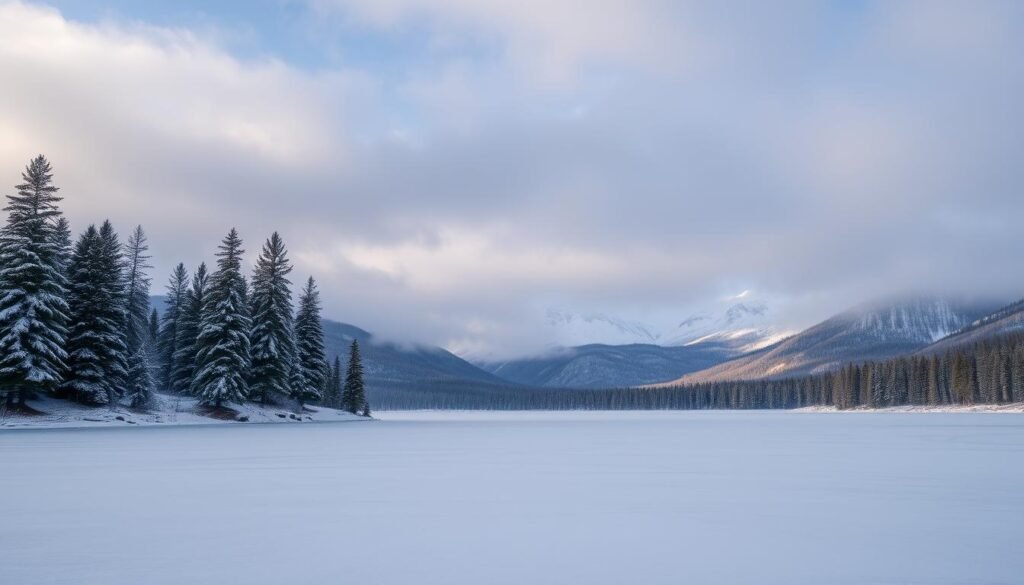
Winter brings a quieter, sharper side to U.S. parks that rewards slow, deliberate travel. I find easy parking, low-angle light for photos, and near-empty trails make a big difference for planning short trips.You can learn more about best-island-to-visit-in-hawaii.
Zion National Park
Cool January temps (8–13°C) mean crisp mornings for Angels Landing and Watchman Trail. I drive the canyon shuttle-free and lean on Court of the Patriarchs and Emerald Pools for peaceful overlooks.
White Sands & Death Valley
White Sands offers ranger-led sunset strolls and gypsum-dune sledding with daytime highs near 4–13°C and very cold nights. Death Valley runs mild (7–19°C), with Badwater Basin, Zabriskie Point at sunrise, and Furnace Creek ranger programs worth booking.
Payette National Forest (Idaho)
McCall’s Winter Carnival adds snow sculptures and fireworks. I snowshoe or snowmobile by day and soak at Gold Fork Hot Springs when temps sit around −5 to 3°C.
- Why winter works: quieter trails, dramatic light, and easier access.
- Weekend tips: start early, pack layers, and aim for star-filled nights.
- Safety notes: watch for icy patches, big day–night swings, and carry extra water even in cool weather.
| Park | Avg temps (°C) | Top attractions |
|---|---|---|
| Zion | 8–13 | Angels Landing, Watchman Trail, Observation Point |
| White Sands | 4–13 (nights much colder) | Ranger sunset strolls, dune sledding |
| Death Valley | 7–19 | Badwater Basin, Zabriskie Point, Furnace Creek tours |
| Payette (McCall) | −5–3 | Winter Carnival, snowshoeing, Gold Fork Hot Springs |
Urban winter city breaks in the States: culture, food, and sunny strolls
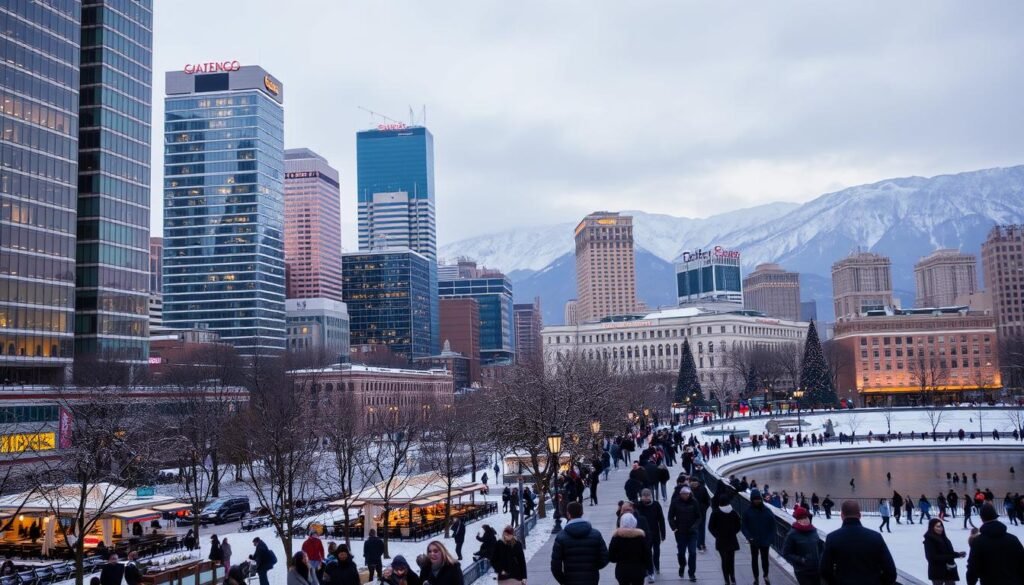
A winter city weekend can balance outdoor patios, local food scenes, and a few must-see attractions without rush. I like short itineraries that leave time for a long lunch and an unhurried sunset walk.
San Diego, California
Daytime temps hover around 10–19°C, which makes patios pleasant and whale watching prime. I time whale trips on weekends and plan museum hours at Balboa Park for gardens and galleries.
Evenings in the Gaslamp Quarter are great for outdoor dining, though some beach bars scale back off‑peak. I recommend booking hotels with easy beach access and reserving whale‑watch seats early.
Brunswick & The Golden Isles, Georgia
Mild weather (about 8–16°C) and quiet beaches make for slow mornings and long bike rides beneath Spanish moss. Jekyll Island’s seasonal treasure hunts — like the glass orb search — add charm for a short trip.You can learn more about best-time-to-visit-bali.
I time theater nights at Brunswick’s historic Ritz and plan beachcombing on Jekyll for sunset strolls.
“Pick two to three days: morning sightseeing, a long lunch, and a coastal sunset walk.”
- Quick tips: reserve whale trips on weekends, check hours for beach bars, and book hotels with flexible cancellation.
- Neighborhood hops: Gaslamp for dinner, La Jolla Shores for walks, Jekyll for shelling.
| Spot | Avg temps (°C) | Top attractions |
|---|---|---|
| San Diego | 10–19 | Whale watching, Balboa Park, Gaslamp dining |
| Brunswick & Golden Isles | 8–16 | Quiet beaches, biking, Jekyll treasure hunts |
Coastal retreats for a gentle winter: Hunting Island, South Padre Island, Moosehead Lake
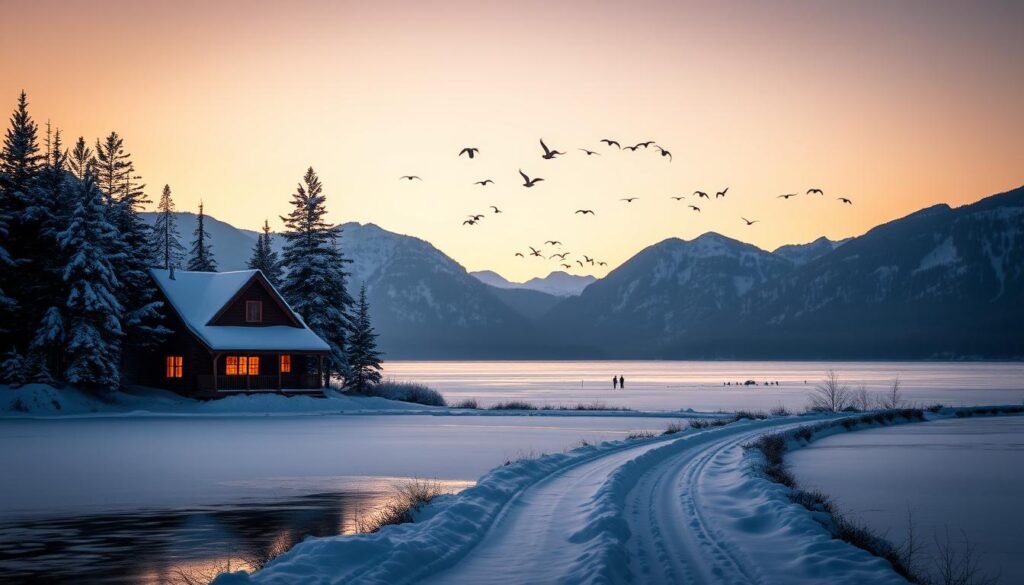
For a gentle winter reset, I pick coastal islands and a classic frozen-lake escape that show how different January can feel on the same map.
I climb the 167-step lighthouse for wide views, then slow down on the Marsh Boardwalk Trail. Average temps sit around 16–17°C, which makes beachcombing and birdwatching easy work.
The New Year’s Day Pelican Plunge is a local scene, and the boardwalk is alive with shorebirds and quiet tides.
South Padre Island & Port Isabel, Texas
South Padre offers mild days (11–20°C) and dolphin cruises from Sea Ranch Marina. I wander the Laguna Madre Nature Trail and Market Days at Port Isabel for local finds.
Climb the Port Isabel Lighthouse for coastal views, then pick a market snack and stroll the shoreline. Off-season hotels often have midweek rates worth checking.
Moosehead Lake, Maine
For a classic New England shift, Moosehead Lake runs −7 to −2°C. I snowmobile across the frozen lake, ski Lily Bay State Park trails, and watch dark skies for stars or faint northern lights.
Evenings can mean Fireside Winter Storytelling at a cabin. Bring true winter layers for those sub-freezing nights.
- Contrast: southern barrier-island strolls vs. a frozen-lake escape for a choose-your-winter vibe.
- Packing: windbreaker for sea breezes, heavy layers for Maine cold.
- Timing: midweek stays often stretch your budget and quiet the crowd.
| Spot | Avg temps (°C) | Top activities |
|---|---|---|
| Hunting Island | 16–17 | Lighthouse climb, Marsh Boardwalk, pelican spotting |
| South Padre & Port Isabel | 11–20 | Dolphin cruises, nature trails, Market Days, lighthouse views |
| Moosehead Lake | −7 to −2 | Snowmobiling, cross-country skiing, stargazing, storytelling |
If you want more options for a midseason coastal plan, check my midwinter coastal guide for added ideas and timing tips.You can learn more about best-hawaiian-island-to-visit.
Hawaii in January: Kailua Kona sunshine, manta rays, and coffee country
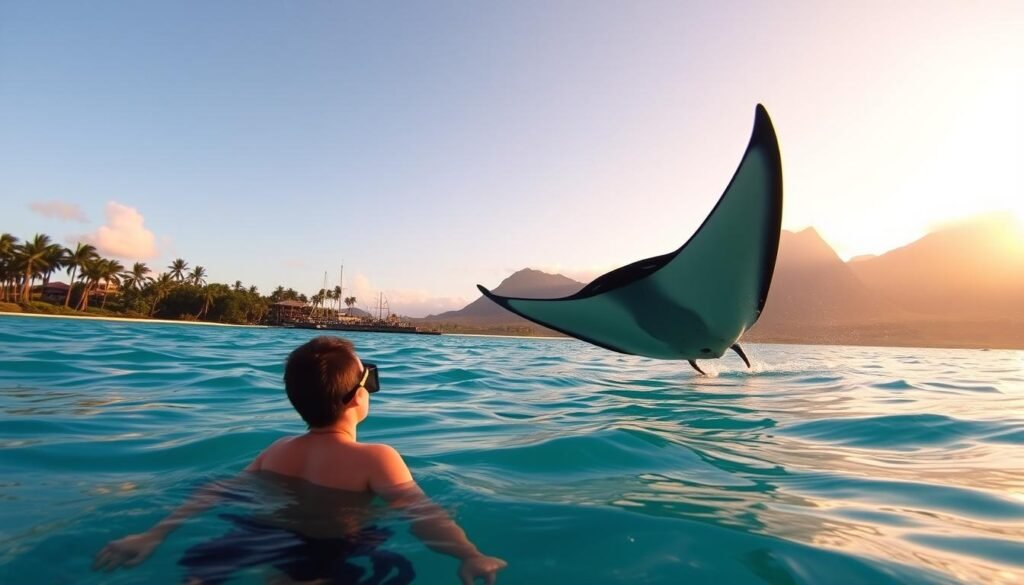
I love Kona for its reliably warm, dry weather and steady sea temps. Days run about 20–27°C, which makes mornings perfect for reef time and late afternoons ideal for sunset strolls.
Best beaches and bays for snorkeling and sunset
Magic Sands and Keauhou Bay are my go-to spots for calm-water snorkels. I aim for early starts; the water is clearer and crowds are smaller.
Tip: bring reef-safe sunscreen and a lightweight cover for breezy evenings.
Seasonal highlights: whale watching and local festivals
Peak humpback season runs November–April, so I book responsible whale-watching tours out of Kailua-Kona harbor. Choose operators that follow distance guidelines and have naturalist briefings.
- I book manta night snorkels at Keauhou Bay well ahead — these sell out fast.
- I pair a morning snorkel with a Kona coffee farm tour to sample single-origin roasts.
- I time a short trip around the Kona Surf Film Festival for indie ocean films and local energy.
Cultural stop: Puʻuhonua o Hōnaunau National Historical Park gives context between ocean days and volcanic explorations.
“If you extend your stay, mix beach time with a day trip to volcanic parks for dramatic contrasts.”
For planning, I recommend booking manta and whale tours early in the year and checking KOA access for easy island logistics. These islands offer varied activities that fit a relaxed schedule or an action-packed trip.
Best places to visit in January in Europe: my favorite picks
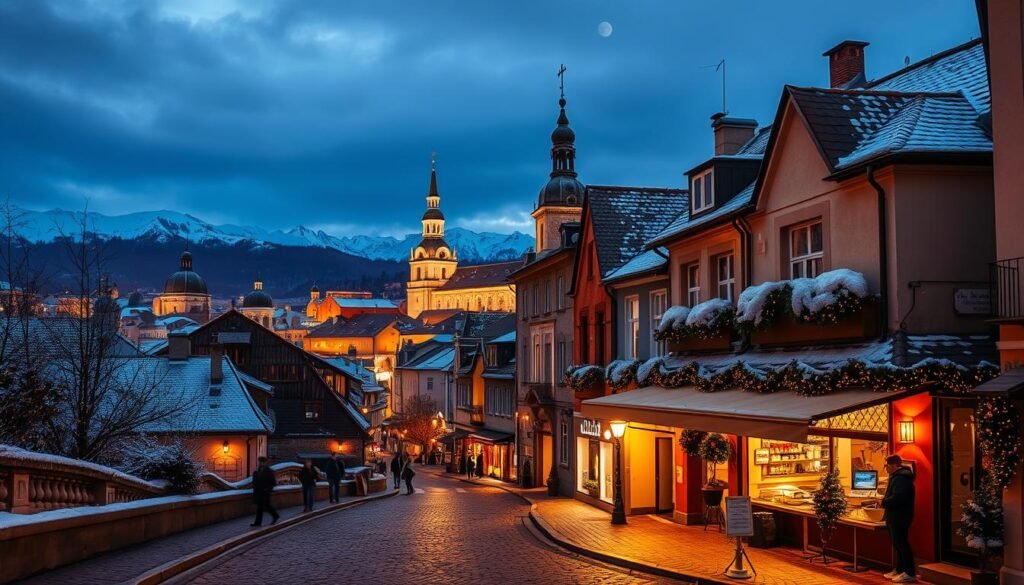
Europe in January wears a quieter, frost-edged charm that rewards slow city strolls and warmed-up cafes. I like short days that leave evenings free for museum light shows and hearty local food.
Stockholm and Prague: snow-dusted Old Towns and museums
Stockholm averages about 0°C. I wander Gamla Stan, hop metro art stops, and warm up in cozy cafés near the Vasa Museum.
Prague sits near 2°C. I trace Prague Castle down to Old Town Square, duck into pubs for stew, and watch for light snow along the Vltava.
London and Amsterdam: iconic sights and evening lights
London (≈6°C) keeps major attractions and free museums open. Borough and Camden markets serve great street food and quick winter bites.
Amsterdam (≈4°C) hosts the Amsterdam Light Festival through mid-month. I prefer canal walks or a twilight cruise for the best views.
Edinburgh and hidden trails
Edinburgh (≈4°C) feels dramatic at night. Burns Night late in the month brings poetry, supper, and local tradition for a meaningful weekend.
For quieter hikes, Hrensko (≈0°C) links to Pravčická brána and the nearby Bastei Bridge. Trails are mostly flat and great for day trips.
- Quick tips: use trains for short hops, plan museum time during short daylight, and pack layers for evenings.
| City | Avg temp (°C) | Top attractions | Why go |
|---|---|---|---|
| Stockholm | 0 | Gamla Stan, museums, metro art | Quiet streets, easy museum days |
| Prague | 2 | Prague Castle, Vltava cruises, pubs | Cozy cuisine, possible snow |
| Amsterdam | 4 | Light Festival, Rijksmuseum, canals | Evening lights and canal cruises |
| Edinburgh / Hrensko | 4 / 0 | Castle, Burns Night; Pravčická brána, Bastei | History, festivals, winter hikes |
Northern lights and pure winter wonderlands: Reykjavik and Rovaniemi
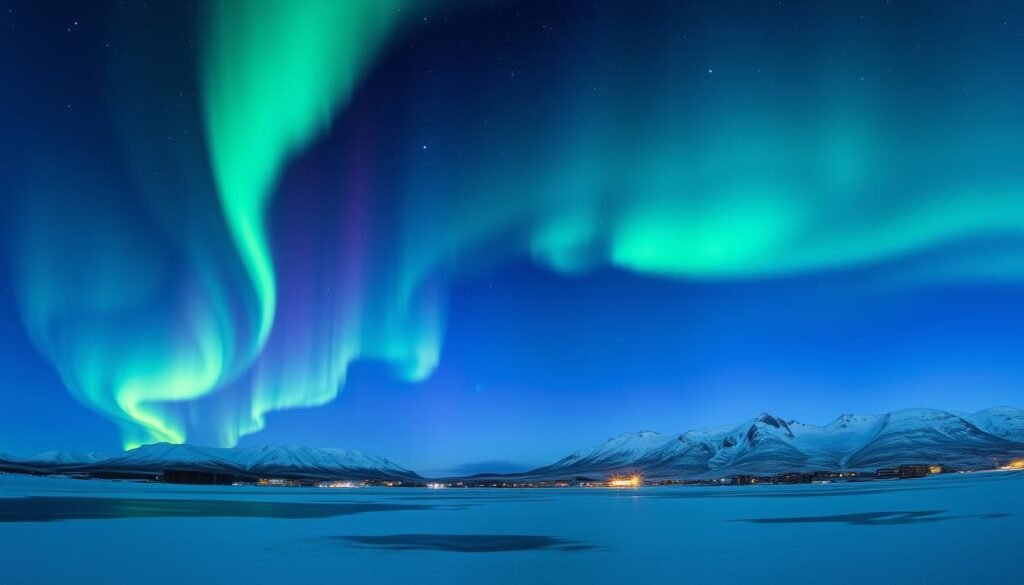
Short daylight hours mean more night-time chances, and I use them for aurora hunts and warm soaks.
Short days, big rewards: aurora hunting and geothermal soaks
In Reykjavik some January days offer only about four hours of daylight. That time is best for quick city walks, museums, and a warm meal.
Once night falls, the long dark is prime for the northern lights. I join guided night tours that include forecasting, safe transport, and photography help.
When skies cloud over, I balance aurora chases with geothermal rests at the Blue Lagoon or local hot springs.
Arctic activities: reindeer rides, huskies, and Santa’s village
Rovaniemi is a quieter, more affordable option after the holidays. Average climate sits near −12°C, so I pack insulated boots, thermal layers, and hand warmers.
I book reindeer rides and husky sleds with operators that winterize routes. Santa Claus Village stays open and feels less crowded in the weeks after Christmas.
“Short days mean long nights—and that gives you more time under the aurora if you plan for it.”
- I set expectations: very short daylight, but ideal long nights for northern lights.
- I pair aurora hunts with warm pools and winterized Golden Circle or south coast tours.
- Pack heavy layers and join guided night tours; have museum, ice bar, or hearty-food backups for cloudy nights.
Mild Mediterranean breaks: Rome, Athens, Malta, and the Algarve
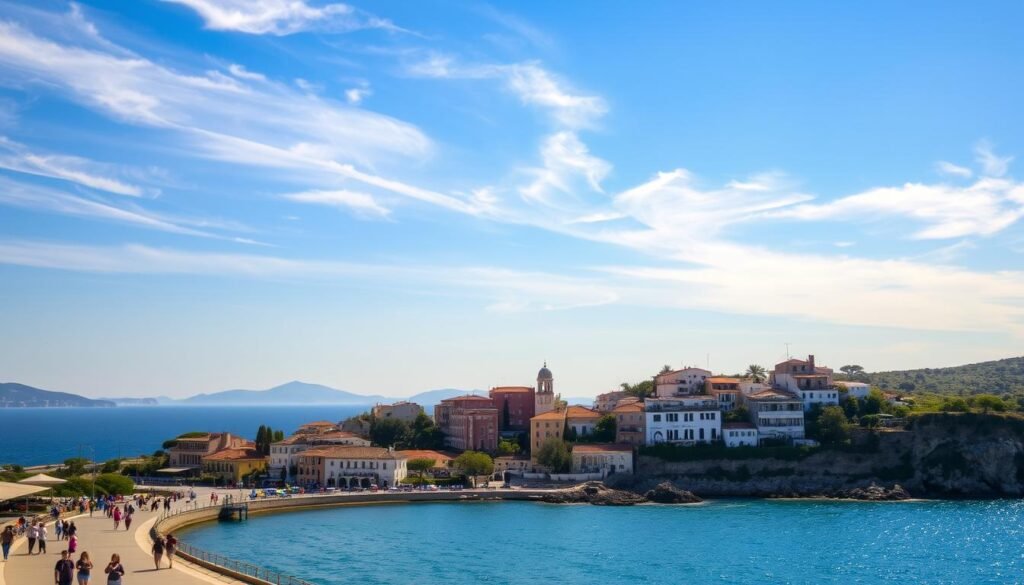
I lean on Mediterranean mildness for easy stair climbs, coastal walks, and warm café breaks that feel restorative on a short winter trip.
In Rome the weather sits near 10–15°C, which makes the Colosseum, Roman Forum, and Palatine Hill far more pleasant for pacing and photos. Lines shrink, and I can linger at ruins without the crush.
Ancient sites without the lines: Colosseum and Acropolis
Athens holds similar temps (about 10–15°C). I book the Acropolis Museum and Colosseum ahead, but I still find shorter queues and calmer viewpoints. Day trips to Delphi or Corinth are easy additions when I want a fuller day outside the city.
Coastal walks and village charm: Malta and Portugal’s Algarve
Malta runs milder (16–18°C) and feels more than a beach stop. I explore prehistoric temples, Old Town alleys, and take a Gozo ferry for a scenic day hop.
The Algarve averages near 16°C. Quiet coves like Praia da Marinha and coastal drives between Lagos and small fishing villages make for road-trip rhythm and peaceful golden-hour walks.
- Why go now: mild days help stair climbs and archaeology without sweat.
- My tip: reserve key entries but enjoy shoulder-season flexibility for spontaneous coastal detours.
- Weekend idea: mix a city museum morning with an afternoon coastal stroll and a cozy café lunch.
For more Mediterranean winter options, see a short guide on Mediterranean winter trips that pairs city stops with quiet shoreline drives.
Island warmth close to Europe: Canary Islands for beaches and volcanic parks
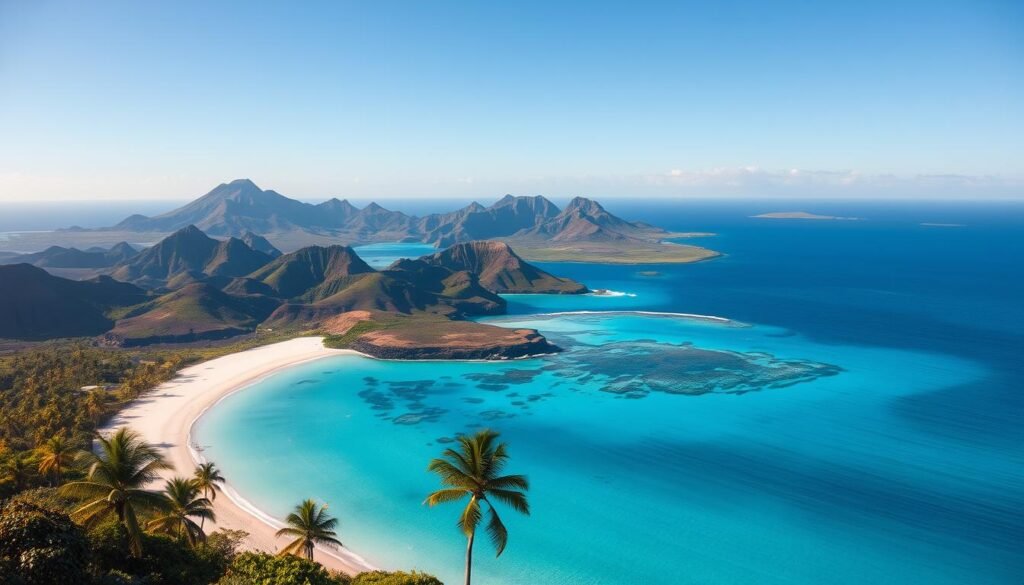
January in the Canaries often feels like a borrowed piece of summer without the crowds. I get steady 20–22°C weather, easy flights from Europe, and quieter hotels after the holiday rush.
Choosing an island
I compare options by mood and terrain. Tenerife hosts Teide national park and high viewpoints above the clouds. Lanzarote shows stark lava fields and tubes. Fuerteventura has sweeping dunes, while Gran Canaria offers varied microclimates across one destination.
What I do there
- I choose calm beaches for quiet sun days or pick dramatic volcanic shores for photos.
- I drive scenic crater rims, explore lava tunnels, and hike coastal trails.
- Off‑peak January means good rates for beachfront hotels and self‑catering villas.
- Car hire is straightforward, and ferries make short island‑hopping easy if you have the time.
Activities I recommend: coastal hiking, whale watching, and sampling local markets under blue skies. The season is ideal for relaxed trips with a volcanic twist.
Global January adventures inspired by National Geographic
A short flight or a high-speed train can shift you from film premieres to glowing ice palaces in a single day.
Utah’s Sundance and Wasatch skiing: films by day, powder by night
I stitch an art-and-snow itinerary in Park City: catch Sundance screenings, then ski Park City Mountain, Deer Valley, or Powder Mountain that afternoon or under lights at night.
Local wins: free zero-emission buses make short hops easy, and I love popping into artisan shops and chocolate makers between showings and slopes.
San Sebastián, Spain: drum parades, cider season, and Michelin-starred bites
San Sebastián hums on January 20 with tamborradas drum parades and the start of cider season.
The city is compact and walkable, so I pair tapas crawls with Michelin-level dinners and an evening bike ride along the bay.
Northeast China: Harbin Ice Festival and rime-frosted river trees
The Harbin International Ice and Snow Festival lights up late December through February with towering illuminated ice palaces.
I add Jilin’s rime-frosted trees and its lantern-lit river scenes for otherworldly dusk photos. The Beijing–Harbin high-speed train even runs in extreme cold, shrinking travel time between city stops.
“Layer well, use traction on icy streets, and plan night photography for peak illumination.”
- I suggest booking guided tours and film tickets early—this season fills quickly.
- Set expectations: cold temps, brilliant lights, and unique cultural moments across these places.
- Pack layers, traction cleats, and a camera for night shots that capture frozen detail and glowing ice.
Finding flights, hotels, and deals in January
January’s quieter travel rhythm reveals flash sales and flexible-rate perks if you act fast.
Why post-holiday pricing shines and how to time bookings
After the holidays, airlines and lodging drop rates to fill empty inventory. I watch midweek departures for lower fares and quieter airports.
Per National Geographic Traveller insights, this season often brings mild or dry options and cost-effective winter peaks. I book early for ski weekends and festivals, but wait closer in for city breaks where rooms usually remain plentiful.
Tools I use: flight search, lodging filters, and flexible-date hacks
I run flexible calendars on Skyscanner and use Booking.com filters for last-minute hotel deals and refundable rates. I pair fare alerts with 24-hour free changes so I can pounce on flash discounts without risk.
- Quick checklist: alternate airports, mixed carriers, Saturday-night stays, and refundable rates.
- Stack points, off-peak award charts, and shoulder-season car-rental rates for added savings.
| Tip | Tool | When to act |
|---|---|---|
| Find low midweek fares | Skyscanner calendar | 6–8 weeks out |
| Catch hotel promos | Booking.com filters | 2–3 weeks before stay |
| Lock refundable fares | Airline alerts | Flash sale windows |
January weather and what to pack: from snow to beach
Packing smart makes the difference between freezing on a tundra trail and sipping coffee on a sunny terrace. I split my gear into two compact kits so I can switch between Arctic days and island afternoons without lugging extra bags.
Layering for subzero city strolls and ski slopes
For Reykjavik or Rovaniemi I expect about four hours of daylight and subzero temps. Alta and Snowbird average −9°C to −1°C, so I pack thermal base layers, an insulated jacket, and waterproof boots.
Cold extras: traction cleats, neck gaiters, goggles with low-light lenses, hand warmers, and a hydration pack for higher altitudes.
Warm-destination essentials: sun care, light layers, and evening jackets
For warm U.S. spots (Miami 18–24°C, Palm Desert 15–22°C) and the Canary Islands (~20–22°C) I bring reef-safe sunscreen, breathable fabrics, a sun hat, and a light jacket for cool nights.
- I pack a minimalist hiking kit: wool socks, trekking poles, and a headlamp for short daylight months.
- I also take compact camera gear for aurora or night festivals and a dry bag for boat or snorkel activities.
- Remember deserts and parks can swing wildly from day to night—plan layers for those shifts.
Weekend trips and short winter breaks from U.S. hubs
Short hops from major hubs let me swap office routine for a crisp slope day or a mild seaside afternoon in under four hours.
Quick escapes with direct flights: sun, snow, and scenic streets
I rely on direct flights and short drives: SLC for Wasatch powder, DEN for Breckenridge, RNO for Tahoe views, MIA for beaches and events, and SAN for whale watching. From Key West I plan a ferry day to Dry Tortugas for snorkeling and ruins.
Itineraries that maximize limited daylight and downtime
For a two- or three-day trip I start early, fit a long lunch, and book an early dinner to catch sunset light. Pack carry-on only so I move fast and skip baggage waits.
- Pre-book lift tickets and choose hotels near transit or gondolas.
- Combine a city morning with a nearby park or beach afternoon for variety without extra time lost.
- Look for last-minute deals on shoulder-season city hotels and midweek ski stays.
Fallback plans matter: swap an outdoor day for a museum, spa, or indoor food hall if weather turns. That keeps your weekend productive and relaxed during the winter season.
“Early starts and flexible plans let a short break feel like a proper escape.”
Tours and activities that shine in the off-season
Bigger crowds thin after the holidays, and that opens great opportunities for guided outings. I look for experiences where guides have more time for questions, better photography windows, and small-group attention.
Ranger-led walks, guided city tours, and desert photo hours
I curate low‑crowd tours like ranger-led sunset strolls at White Sands and geology walks from Furnace Creek that run in the winter season. These give longer golden-hour light and clearer views.
Winter wildlife, night skies, and northern lights excursions
Wildlife activities peak now: gray whales off San Diego and humpbacks near Kona are easier to spot during winter months. For aurora hunters, I book northern lights outings in Reykjavik and Rovaniemi that include forecasting and photo help.
“Choose guided night runs that include forecast tools and photography tips — they make a big difference.”
- I favor small-group desert sunrise and sunset photo windows for dramatic colors and long shadows.
- Amsterdam’s Light Festival and evening canal cruises pop before mid‑January — ideal for a quieter city night tour.
- Look for food and history walks in quieter European towns where guides can dive deeper into local stories and attractions.
- Always confirm seasonal schedules and minimums; many operators offer flexible booking in shoulder months.
| Type | Example | Why go |
|---|---|---|
| Ranger-led walk | White Sands sunset stroll | Fewer people, richer ranger talks, prime light |
| Geology program | Death Valley (Furnace Creek) | Expert-led routes, safer winter conditions |
| Night/solar tour | Amsterdam Light Festival | Illuminated art, calm canals before mid-month |
| Aurora tour | Reykjavik → Rovaniemi | Forecasting, photography assistance, long dark hours |
Conclusion
Value-packed window, January gives a rare window when costs fall and choices widen across continents. I find this time of year perfect for picking ski towns, aurora nights, or sunny island breaks without the usual crowds.
I encourage choosing destinations by daylight needs, climate comfort, and the activities that light you up. Watch festival calendars—from Sundance to San Sebastián—and lock flexible flights and hotels while award space and post-holiday deals remain generous.
Mix city and nature for balance during a crisp morning and a cozy night. If the new year calls for a reset, a short trip this month is my favorite way to answer it. For more January trip ideas, see a quick guide.


